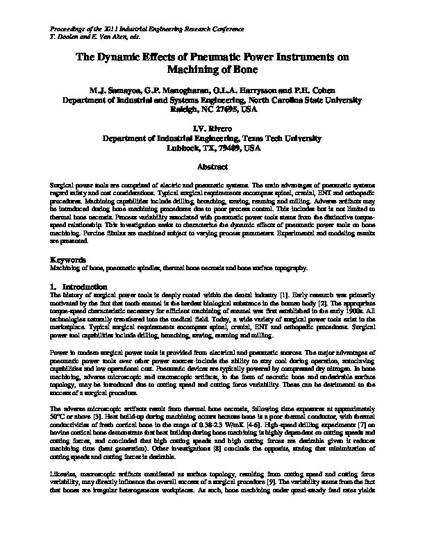
Presentation
The Dynamic Effects of Pneumatic Power Instruments on Machining of Bone
IIE Annual Conference
(2011)
Abstract
Surgical power tools are comprised of electric and pneumatic systems. The main advantages of pneumatic systems regard safety and cost considerations. Typical surgical requirements encompass spinal, cranial, ENT and orthopedic procedures. Machining capabilities include drilling, broaching, sawing, reaming and milling. Adverse artifacts may be introduced during bone machining procedures due to poor process control. This includes but is not limited to thermal bone necrosis. Process variability associated with pneumatic power tools stems from the distinctive torque-speed relationship. This investigation seeks to characterize the dynamic effects of pneumatic power tools on bone machining. Porcine fibulas are machined subject to varying process parameters. Experimental and modeling results are presented.
Keywords
- Machining of bone,
- pneumatic spindles,
- thermal bone necrosis and bone surface topography
Disciplines
Publication Date
2011
Comments
This is a proceeding published as M.J. Samayoa, G.P. Manogharan, O.L.A. Harrysson and P.H. Cohen, I.V. Rivero. The Dynamic Effects of Pneumatic Power Instruments on Machining of Bone. Proceedings of the 2011 Industrial Engineering Research Conference. 2011. Posted with permission.
Citation Information
M.J. Samayoa, G.P. Manogharan, O.L.A. Harrysson, P.H. Cohen, et al.. "The Dynamic Effects of Pneumatic Power Instruments on Machining of Bone" IIE Annual Conference (2011) Available at: http://works.bepress.com/iris_rivero/14/
